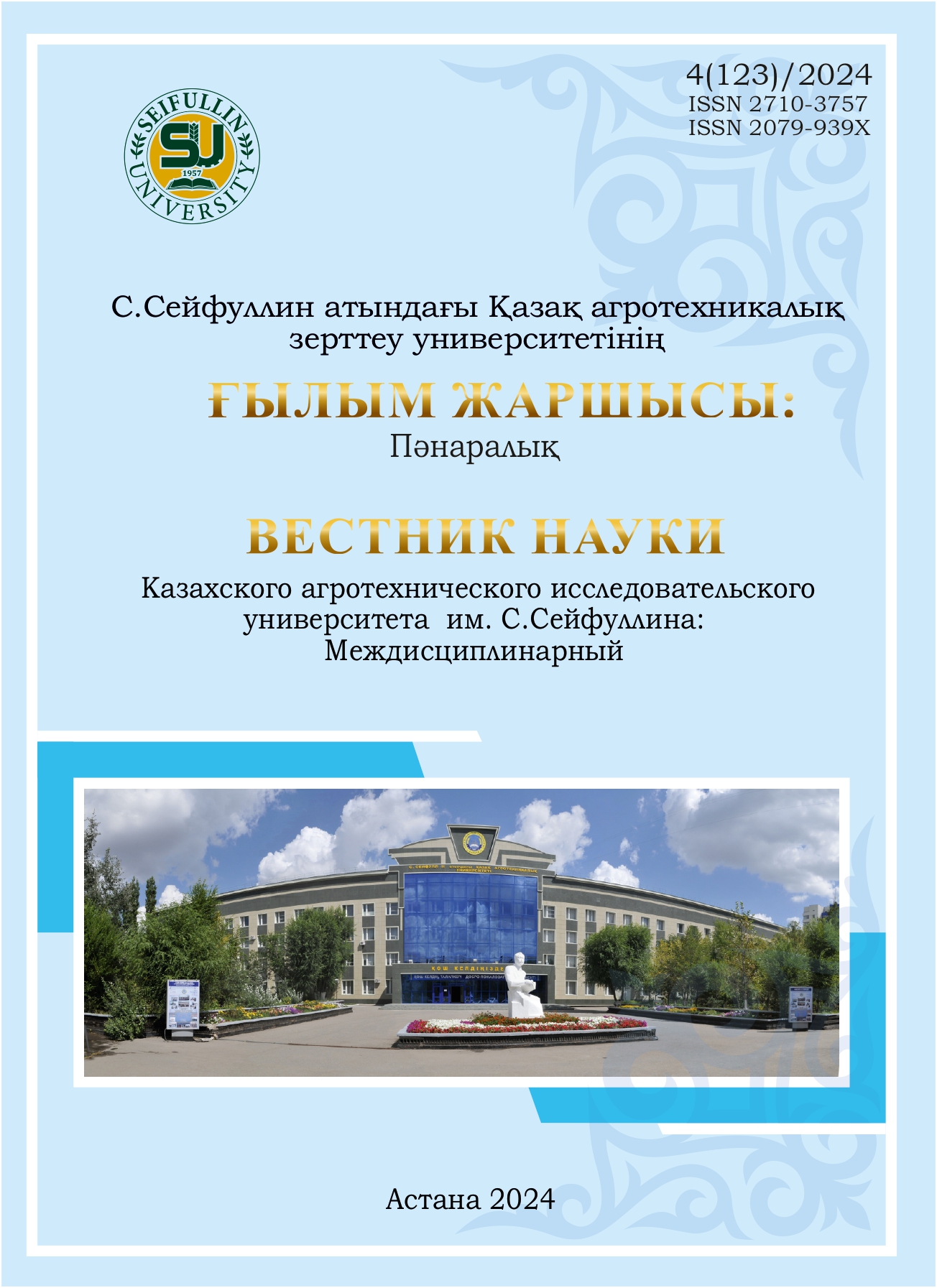Managing the sustainability of agricultural landscapes through assessing environmental conditions
DOI:
https://doi.org/10.51452/kazatu.2024.4(123).1781Keywords:
assessment of environmental conditions; agricultural land use; management of agrolandscapes; agricultural lands; agro-ecological grouping of lands; ecological state of lands.Abstract
Background and Aim. Modern agricultural enterprises worldwide are experiencing critical pressures
that affect the food security of states and the quality of life of their citizens. As a result of the lack of upto-
date information about the environmental properties and anthropogenic factors af-fecting agricultural
landscapes, which are the basis of agricultural land use, they degrade, become less productive, and the
quality of farm products decreases. Modern measures used to increase ef-fective fertility are not always
effective and affordable for small and medium-sized agricultural farms. This is because it is not possible
to unify technologies for many reasons. One of the main rea-sons is the diversity of environmental
conditions and factors limiting the productivity of crops. The purpose of the study is to study the
possibility of managing the sustainability of agricultural land-scapes based on an assessment of the
environmental conditions of the management of an organiza-tion whose land use is located in the foreststeppe
zone of the Altai Territory.
Materials and Methods. The scientific research used materials from design and scientific organizations
that studied elements of the territory’s landscapes at various time intervals, which are in the public
domain. The work also used the personal scientific data of the study authors. The re-search is based on
general scientific methods: description, analysis and synthesis, history, observa-tion, as well as system
analysis.
Results. The article presents the results of a study of the environmental conditions of agri-cultural
land use located in the forest-steppe of the Altai Territory, with a total area of more than 17.2 thousand
hectares. The assessment was carried out using 23 quality indicators on arable forage lands. It has been
established that the sustainability of agricultural landscapes is influenced by phys-ical-geographical,
natural-climatic, geomorphological, soil conditions, natural and anthropogenic fac-tors, as well as
their joint influence. We differentiated landscapes based on the influence of limiting influences on
biological objects. Based on environmental zoning and land typical, models of agricul-tural land use
were developed, suggesting different scenarios for agricultural production.
Conclusion. The research results are recommended for use by state and municipal authori-ties when
managing land resources at the local level, and by agricultural producers when organizing land, scientific
and design organizations and forecasting, drawing up long-term documents on the use of agricultural
land and conservation measures.

